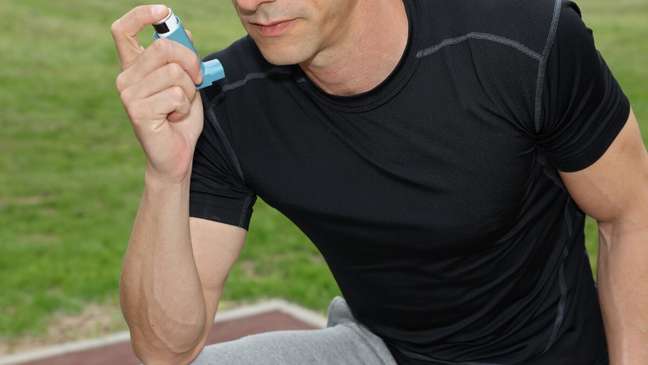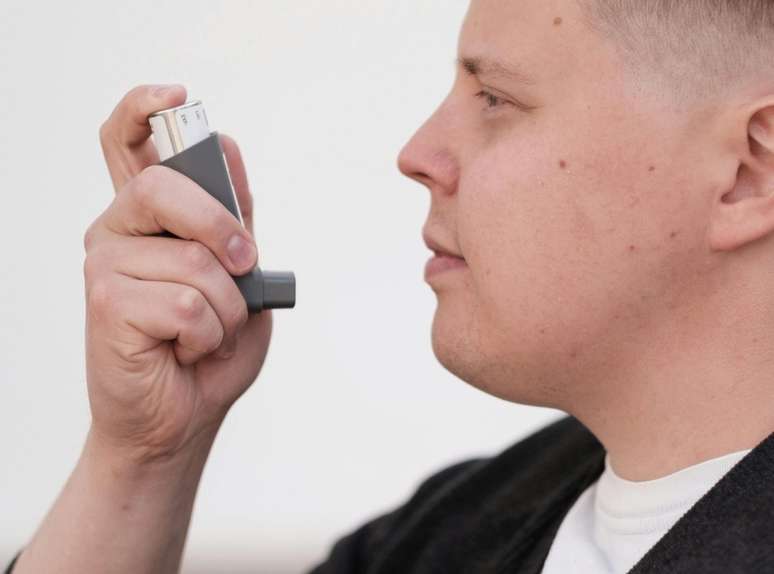The practice of exercise should not be avoided by patients with asthma, as it provides excellent benefits for the treatment of the disease.

Asthma is one of the most common chronic diseases. It affects children and adults, affecting approximately 300 million people worldwide. There are about 20 million asthmatics in Brazil alone, and the disease is usually the third or fourth cause of hospitalization by the SUS, according to the Brazilian Society of Pneumology and Physiology.
Among all the people living with asthma it is very common the perception that exercise cannot be practiced, but in reality they can be great allies. This is because the practice of physical activity promotes good cardiorespiratory functioning and reduces the risk of new asthma attacks.
However, in order to start practicing any sport, it is necessary to have the disease under control, following medical indications and carrying out the treatments correctly. “Some people with severe asthma begin physical activity by walking for at least 30 minutes a day. This frequency helps reduce asthma symptoms and helps them move on to more strenuous activities if affected,” explains Guilherme Azizi, member of the Immunology service at the Hospital Universitário Clementino Fraga Filho (UFRJ) and doctor at the Fluminense Football Club.
Benefits of Exercise for Asthma
The regular practice of physical exercises by patients who have controlled asthma brings great benefits. As already highlighted, abandoning a sedentary lifestyle favors good cardiorespiratory functioning and reduces the risk of new crises. Light exercises, such as walking, are already able to reduce the symptoms of the disease.
For asthma sufferers, a trained and better oxygenated lung also helps control anxiety symptoms, as the affected person often develops anxiety attacks out of fear of the sometimes consequences of shortness of breath. In addition, physical activity is indicated to increase the tolerance to effort.
This is the most common chronic disease among Olympic athletes (8%) and there is no shortage of good examples in Brazilian sport when it comes to asthma. The disease affects athletes such as striker Marta, six times the best player in the world, and swimmers Fernando Scherer and Cesar Cielo. And all of them are Olympic champions or medalists.
Nominated sports
Basically, for all those who want to improve physical condition, respiratory rate and strengthen the muscles of the rib cage, sport is an excellent ally. Guilherme mentions some ways that can help:
I swim:
Swimming is often recommended for asthmatics as a safe and enjoyable way to maintain lung function, increase aerobic capacity, and improve quality of life, as the doctor points out. The modality is effective for treating bronchitis and asthma as it dilates the bronchi, alveoli and lungs, improving respiration and cell saturation. However, swimmers with asthma are advised to avoid poorly managed pools with excessive levels of chlorine in the air or water, as it can make breathing difficult.
Soccer:
Intense activity such as football can also help asthma sufferers. But caution is needed, as sports can trigger symptoms more easily. We must pay attention to the climate, because if it is too cold there will still be the possibility of new crises.
Cycling:
Cycling can be a very beneficial physical activity. However, care must be taken in urban centers, as exercise increases respiratory rate and relatively increases the contact of the airways and alveoli with pollutants that contaminate the air. In the first moment, the ideal would be to walk slowly, so that the individual evaluates the possibilities and symptoms of a crisis at the time of the practice with greater speed.
Yoga:
Yoga is an activity that encompasses a large and ancient system of knowledge. His practice is characterized by movements coordinated with the breath and by an attitude of awareness that integrates body, mind and vital energy. Starting yoga can improve lung function and quality of life in patients with mild to moderate stable asthma.
Pilates:
The interesting thing about this physical activity is that its creator, Joseph Pilates, suffered from asthma in childhood. The practice greatly enhances not only breathing, but also concentration, precision and fluidity of movements, bringing benefits to the whole body.
Running:
High-intensity running is considered a physical activity that can trigger asthma symptoms. But this does not mean that the practice should be avoided, because it is always possible to control your own speed. However, some attention must be paid: the environment influences the appearance of symptoms and there are some factors that trigger them, such as temperature and climatic humidity, atmospheric pollution, pollen and fungi suspended in the air and dispersed chemical vapors. Try to run in open spaces with good air quality.
Source: Terra
Benjamin Smith is a fashion journalist and author at Gossipify, known for his coverage of the latest fashion trends and industry insights. He writes about clothing, shoes, accessories, and runway shows, providing in-depth analysis and unique perspectives. He’s respected for his ability to spot emerging designers and trends, and for providing practical fashion advice to readers.








